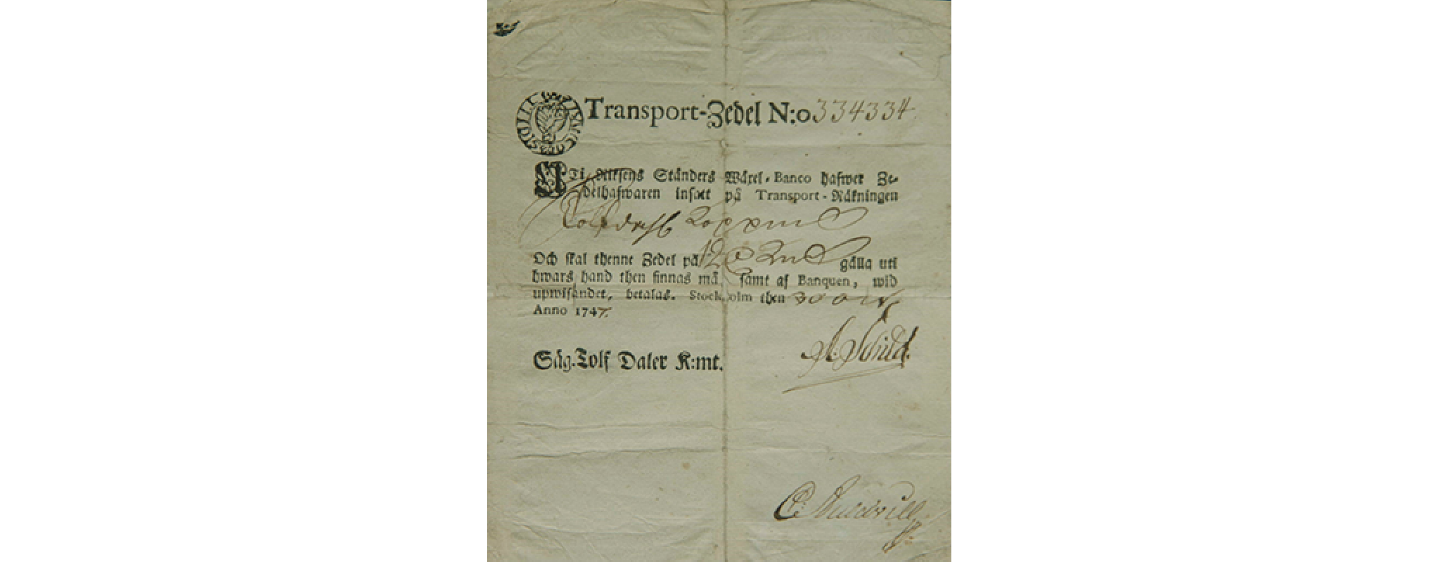1701 - Transport bills are introduced

The predecessor of our modern money. When a transaction was concluded, the bill was signed over, or transported, to its new owner.
It was the Bank of the Estates of the Realm (Sveriges Riksbank) that started to issue transport bills. When a transaction was concluded, the previous and new owners wrote their signatures, the date and the amount of money on the bill.
These bills never became very popular. Many merchants did not like advertising their names and the dates of major transactions. And, if the bills were then sent by post, they were often cut in half to save postage fees. The bank took out advertisements in the newspapers to protest against such behaviour and threatened an “unpleasant reception” for any customers who came in with mutilated notes.
